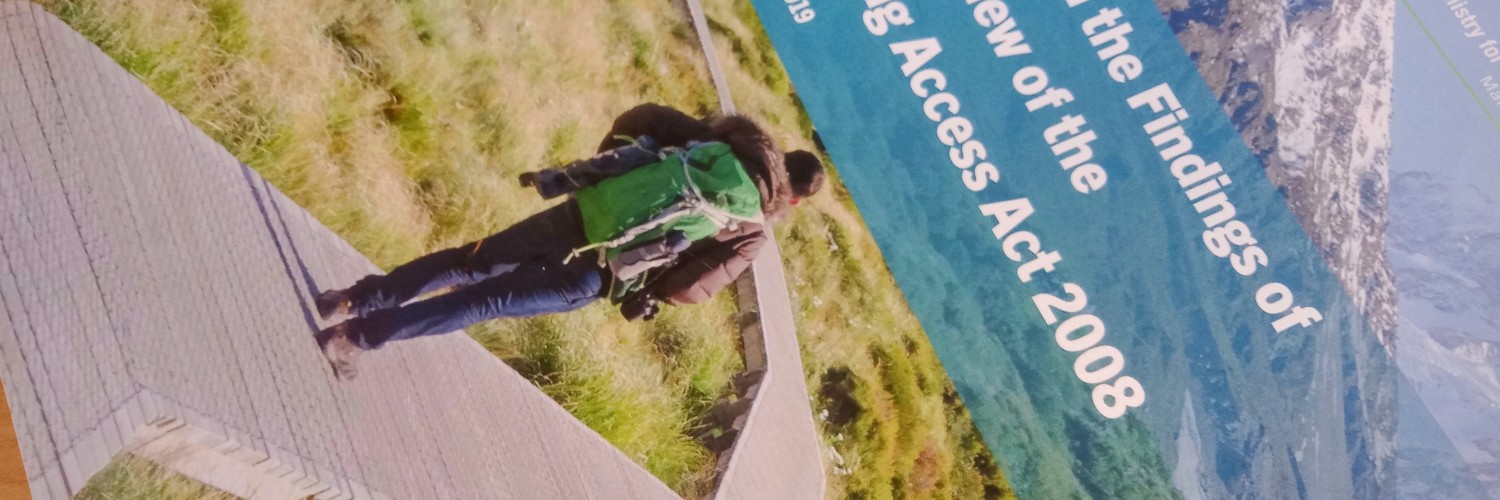Appendix B – Public Feedback Paper discussion questions
Are the Walking Access Act 2008 and the New Zealand Walking Access Commission needed?
What’s working well in your view? Can you provide evidence to support your view?
Are the purpose, priorities, objective and functions in the Act right?
-
Do you think the purpose of the Act should be changed? To what, and why?
-
Do you think the New Zealand Walking Access Commission’s name should be changed? To what?
-
What changes, if any, are needed to the priorities in the Act? Should negotiating access to the following be made priorities:
-
wāhi tapu, traditional sites and areas of cultural significance to Māori
-
land in or near urban areas
-
replacement access for public access which has been closed?
-
-
Should the priorities for negotiating access apply to public land as well as private land in the Walking Access Act?
-
Are changes needed to the objective and functions of the Commission?
Working towards equal access
-
Do you see the outdoors being less accessible for some groups? If so, who? Can you tell us of any experiences you’ve had?
-
What role do you see the Commission playing in relation to equity of access?
Coping with very high numbers of visitors
-
What should the Commission’s role be in managing the impact of high visitor numbers?
Addressing barriers to landowners providing access
-
What are the barriers to landowners providing public access?
-
Can you provide any evidence of which barriers are the most significant?
-
What should the Walking Access Act and/or the Commission’s role be in addressing these barriers?
Encouraging positive visitor behaviours
-
Do you have any information that could help us understand the scale of good and poor visitor behaviour on tracks and trails on private land?
-
What’s the Commission’s role in improving visitor behaviour? For example, provide the New Zealand Outdoor Access Code in different languages, link this Code to other guidance?
-
What do you think about the information in the Act and the New Zealand Outdoor Access Code on responsible behaviour at wāhi tapu and other sites of cultural significance?
Organisations working together
-
Do you have examples where a lack of coordination between government agencies and/ or different pieces of legislation have got in the way of maintaining and improving public access?
-
Should the Commission have a role in assessing unformed legal road closures?
-
Is information about public access to the outdoors comprehensive and easy to use?
-
Would a more flexible means of defining a public access way under the Act, in addition to the gazetted walkway instrument, be a useful addition to the Commission’s tool box? What are the risks of this approach?
-
How could we ensure adequate infrastructure, like toilets, bins and carparks?
-
What relationship should the Commission have with Nga Haerenga Cycle Trust and with Te Araroa?
-
Should the types of organisations that can be controlling authorities be extended, for example to trusts, iwi, hapū or other community groups? What might be some of the positives and negatives of having a non-public body as a controlling authority?
-
What should controlling authorities be called?
Governance for the Act and Commission
-
Do you think the Ministry for Primary Industries should remain the administrator of the Act? If yes, why?
-
If no, do you think this role should be carried out by another government agency (please say which, and why)?
Requirements for the board of the New Zealand Walking Access Commission
-
Is the required number of board members right?
-
Should the Act specify the spread of background, skills and knowledge that board members should have? If so, what should these be?
Funding
-
Should the Commission supplement its Government funding with private funding and/or cost recovery? What are the pros and cons of these?

